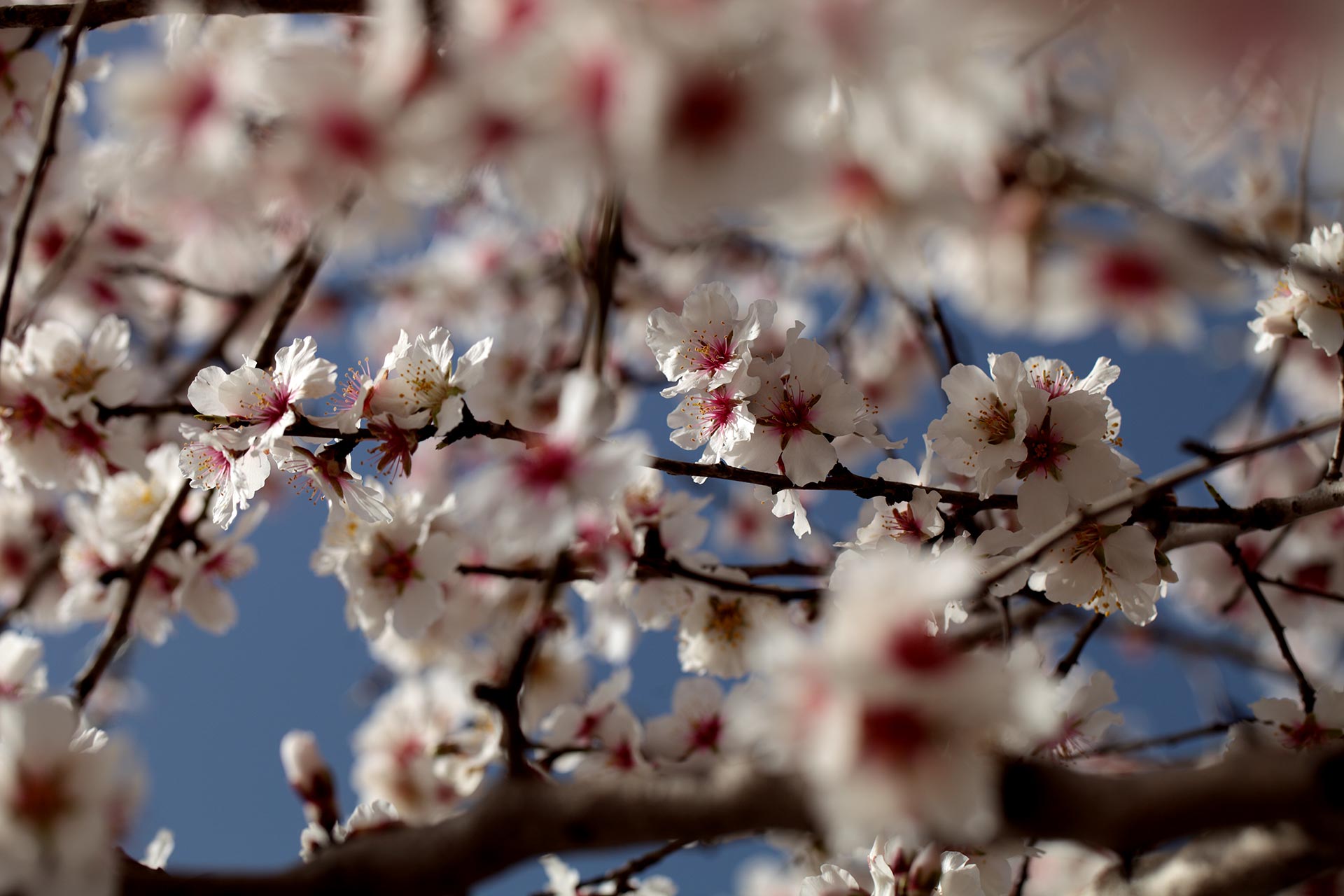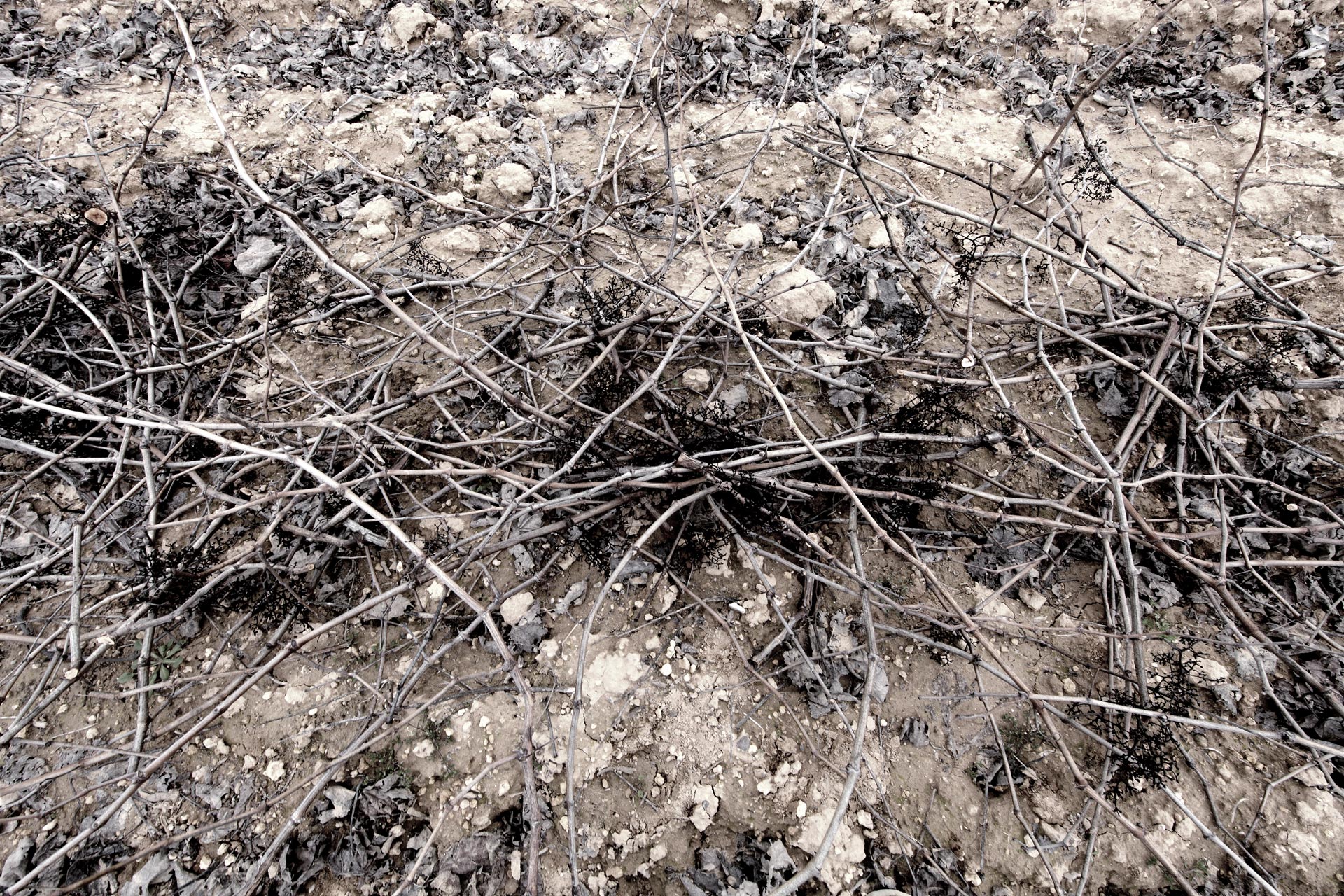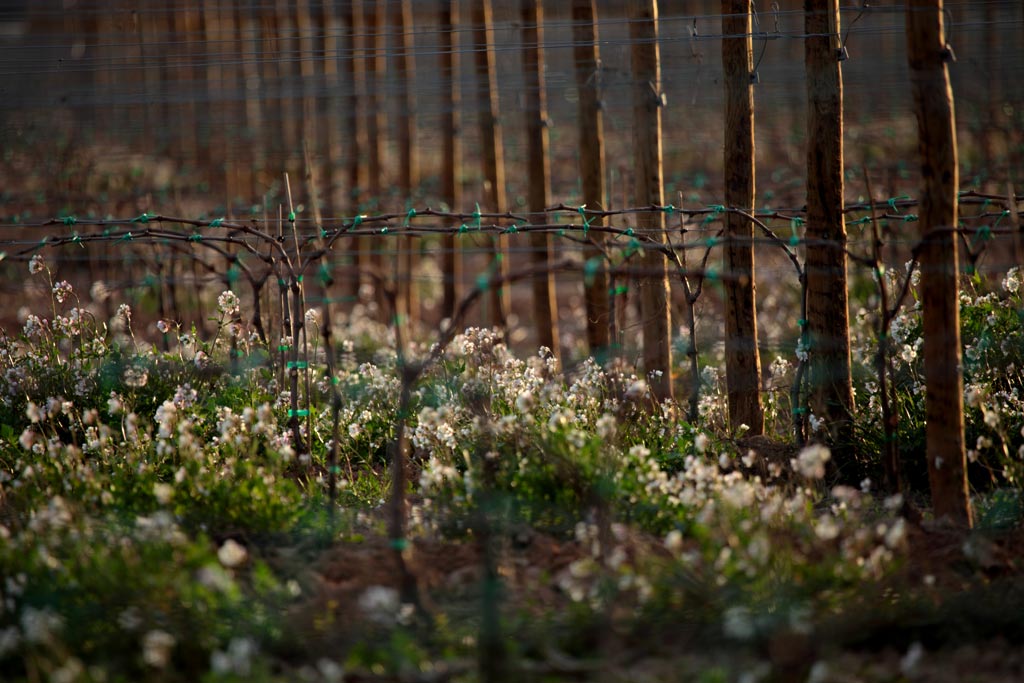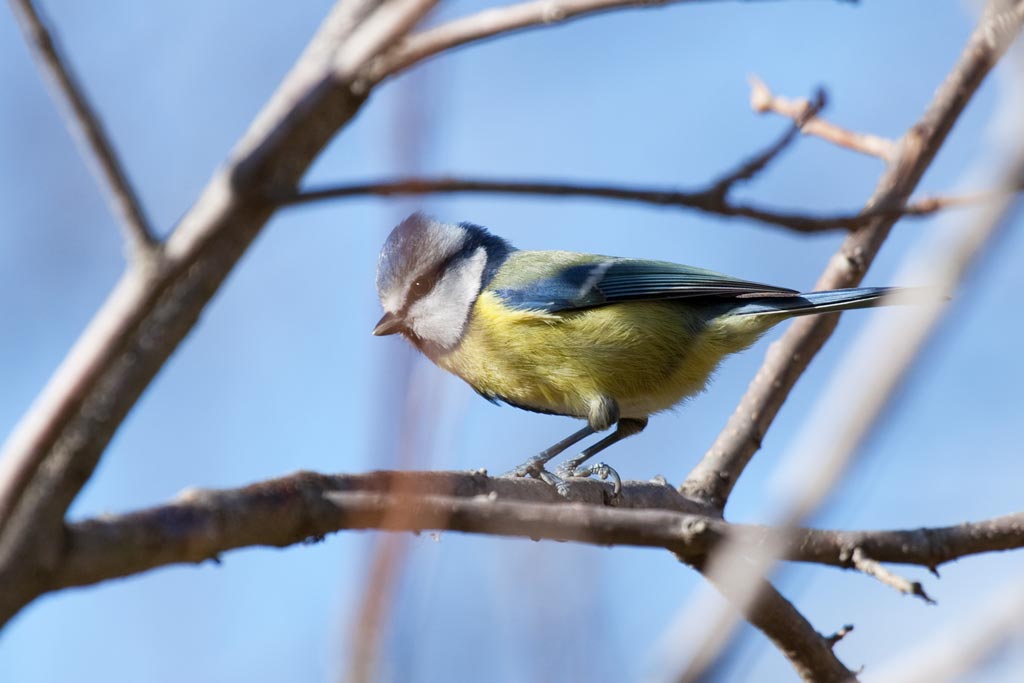-

The Land
There can be no wine without the vine; there can be no vine without the land.
-

-

-

-

-

FROM THE EARTH
If you were earth I would grow in you
and bear fruit of rare sweetness. Miquel Martí i Pol. Untitled book, 1970-71
At Can Bas we like to remember we are rooted in the earth, which sustains us and makes us grow. We recognise that we are of the earth and will return to it and that, if we make wine, it is thanks to the earth that we care for.
At Can Bas we love the earth. Our commitment to it and the respect we pay it resonate in every one of our wines.
At Can Bas we seek excellence in our roots in the earth. We are proud of our terroir, of the vines that grow there and of the setting that gives them their personality.
-
Situation
Situation
The land, vines and the winery of Can Bas are an integral part of a wine estate steeped in history and rooted firmly in our country: Catalonia.
The Can Bas wine estate of Can Bas lies in the heart of the Penedes, 35 km south west of Barcelona and has belonged to the village of Subirats for many centuries.
The land and vines of Can Bas are situated in an advantageous location, influenced by the Mediterranean Sea and protected by the mountains that surround the estate.
TERROIR
The terroir is the expression of all that
is under the soil of the vineyard
and of what occurs above it.
At Can Bas we like to say that terroir is a way of understanding wine and of seeing the world.
At Can Bas we consider terroir to be a living space – as well as a space for life – created by the perfect combination of human action and the unique elements of the natural environment, which is transformed over time.
At Can Bas we consider terroir to be the sum of the characteristics, that the earth, the sky and our environment bring to our vineyards. But we also believe that the wisdom of generations of wine growers and the experience of our winemakers have also left their mark on the terroir and have contributed to its personality.
-
The sky

Cold and ice do not remain in the sky. Popular Catalan saying
At Can Bas we have always looked towards the sky. The sky governs the climate and the weather determines the cycle of the vine. It is the sun in the sky that awakens the sap in the vine, enables the buds and branches to grow, turns the leaves green, opens the flowers and colours the grapes. It is the rain that falls from the sky that nourishes the vines or threatens them with fungus and disease. It’s from the sky that hailstones fall and lightning breaks; from where fog descends and spreads. The sky thaws the frost and either intensifies the dew or disssolves it with warmth.
It’s from the sky that the cool breezes and warm winds blow that nurture the vine, but also the source of the mighty Gregale (coming from the north-east), Ponent (westerly) and Tramuntane (northerly) winds.
It’s the moon in the sky that reminds us that the forces governing the earth are weight and gravity; and like everything in life there is a cycle to be followed and respected.
It is the rain that falls from the sky that nourishes the vines or threatens them with fungus and disease. It’s from the sky that hailstones fall and lightning breaks; from where fog descends and spreads. The sky thaws the frost and either intensifies the dew or disssolves it with warmth.
It’s from the sky that the cool breezes and warm winds blow that nurture the vine, but also the source of the mighty Gregale (coming from the north-east), Ponent (westerly) and Tramuntane (northerly) winds.
It’s the moon in the sky that reminds us that the forces governing the earth are weight and gravity; and like everything in life there is a cycle to be followed and respected. -
The soil

With one sip, you taste the truth of the wine.
At Can Bas we hold the soil in high esteem. We know that the soil is the raw material of our wine estate, which gives our wines their individual character and makes them unique. It is in the soil where the vine sends down its roots, sprouts, lives or subsists. It is according to the quality of the soil that the vine gives more or less fruit. It is on the soil where a determined variety of grape will adapt for better or worse. And it is thanks to the soil that the wine acquires part of its personality. At Can Bas It is the soil that nourishes the roots of the vine and enables them to grow and thrive. It’s the quality of the soil that determines how much fruit the vineyards will yield. It’s down to the soil whether a specific variety of grape will adapt and flourish or not. And it’s the soil that contributes to creating the personailty of our wines.
A truth that comes from beneath the earth. At Can Bas we treat the soil as a living being. We care about its mineral content, its colour and texture, the composition of the subsoil, the topography that it has created, the aspect and the relief of each plot. But we also pay great attention to the species of flora and fauna that interact with the soil and benefit the vineyard and its surroundings. It’s this life that sustains our wines.
At Can Bas we treat the soil as a living being. We care about its mineral content, its colour and texture, the composition of the subsoil, the topography that it has created, the aspect and the relief of each plot. But we also pay great attention to the species of flora and fauna that interact with the soil and benefit the vineyard and its surroundings. It’s this life that sustains our wines. -
The vines

He who looks after vines,
Here in Can Bas, the vines have been grown continously for over a thousand years. A document dating from the end of the 10th Century proves that vineyards adjacent to the church of Sant Joan Salerm – on the Can Bas estate – were traded between the medieval Catalan nobility. However there is evidence to show that in Roman and even Iberian times the cultivation of vines on our estate dates back many more centuries still. At Can Bas, Today, the wine estate of Can Bas comprises 60.5 hectares of vineyards, which extend from the plain near the farm, the spring at Can Bas, the hillside of Les Tarumbes, the valley of the river Bribons to the sunny slopes of Basset hill, as well as the vineyards on the coast at Serral in the municipal district of Sant Saturni d’Anoia.
has much work to do. Popular Catalan saying It is understood at Can Bas each plot is unique and each vineyard retains its own personality. As a result the work and the way in which we treat each plot is different. We have vines centuries-old that produce very few grapes and yet are of magnificent quality; young vines that bring a lightness and freshness to the wines we create; mature 30 year old vines that give a serene and mature character to the wines that we age.
Given the diversity in location and aspect of the plots, the differences in soil, altitude, topgraphy and the range of micro-climates, we are able to cultivate at Can Blas a variety of both native and foreign grapes, white and red, and adapt each variety to the conditions of the terroir that are most favourable to them.
It is understood at Can Bas each plot is unique and each vineyard retains its own personality. As a result the work and the way in which we treat each plot is different. We have vines centuries-old that produce very few grapes and yet are of magnificent quality; young vines that bring a lightness and freshness to the wines we create; mature 30 year old vines that give a serene and mature character to the wines that we age.
Given the diversity in location and aspect of the plots, the differences in soil, altitude, topgraphy and the range of micro-climates, we are able to cultivate at Can Blas a variety of both native and foreign grapes, white and red, and adapt each variety to the conditions of the terroir that are most favourable to them. -
The environment

“The landscape, when viewed panoramically from any high point, looks like a gentle slope, but when we get closer, it turns out to be quite rugged. It’s a disjointed place, neither flat nor mountainous, where you always go either up or down. There are small valleys, rivers and plains. It’s a complex landscape, always changing and extremely diverse”. Josep Pla. Excerpt from A guide to Catalonia, 1971
The terroir at Can Bas is influenced by the natural environment and the interplay between sky, land and vine. This dialogue between forces, conditions and means is what makes the landscape and the wines what they are. In this environment the rivers, streams and forests exert a special influence. The rivers and streams that cross Can Bas form a natural network of waterways that are intermittent and torrential by nature, very common in the Penedès and many other areas of the Mediterranean. They are essential for the good drainage of the vines. These little corridors of green which normally form pools and small depressions on the plain, have a very distinctive microclimate and ecosystem with characteristic woodland, flora and fauna. The rivers create concentrations of moisture, retaining their coolness in summer and conjuring up fog in the winter. Additionally they deposit sandy and alluvial soils, which give a special character to the vineyards.
In contrast Mediterranean woodland – which is quite different to riverbank woodland – provides the backdrop to the Penedes vineyards and another important influencing factor.
On the Can Bas estate, the forest forms a strip, which extends North-west and protects the vines growing on the plain from unseasonal winds and the cold.
The rivers create concentrations of moisture, retaining their coolness in summer and conjuring up fog in the winter. Additionally they deposit sandy and alluvial soils, which give a special character to the vineyards.
In contrast Mediterranean woodland – which is quite different to riverbank woodland – provides the backdrop to the Penedes vineyards and another important influencing factor.
On the Can Bas estate, the forest forms a strip, which extends North-west and protects the vines growing on the plain from unseasonal winds and the cold.
 The woodlands at Can Bas are distinctive dark oases in a vista of vines. They are part of our heritage. There are ancient pine trees, oaks, wild olive trees with an undergrowth of viburnum, boxwood, heather, thyme, ivy and ferns.
In the midst of a vast expanse of vineyards, the Can Bas woodland provides a natural refuge for fauna that wouldn’t be able to survive in open country.
It’s the forest as much as the animals that live in it that give life to the vineyards.
The woodlands at Can Bas are distinctive dark oases in a vista of vines. They are part of our heritage. There are ancient pine trees, oaks, wild olive trees with an undergrowth of viburnum, boxwood, heather, thyme, ivy and ferns.
In the midst of a vast expanse of vineyards, the Can Bas woodland provides a natural refuge for fauna that wouldn’t be able to survive in open country.
It’s the forest as much as the animals that live in it that give life to the vineyards.
